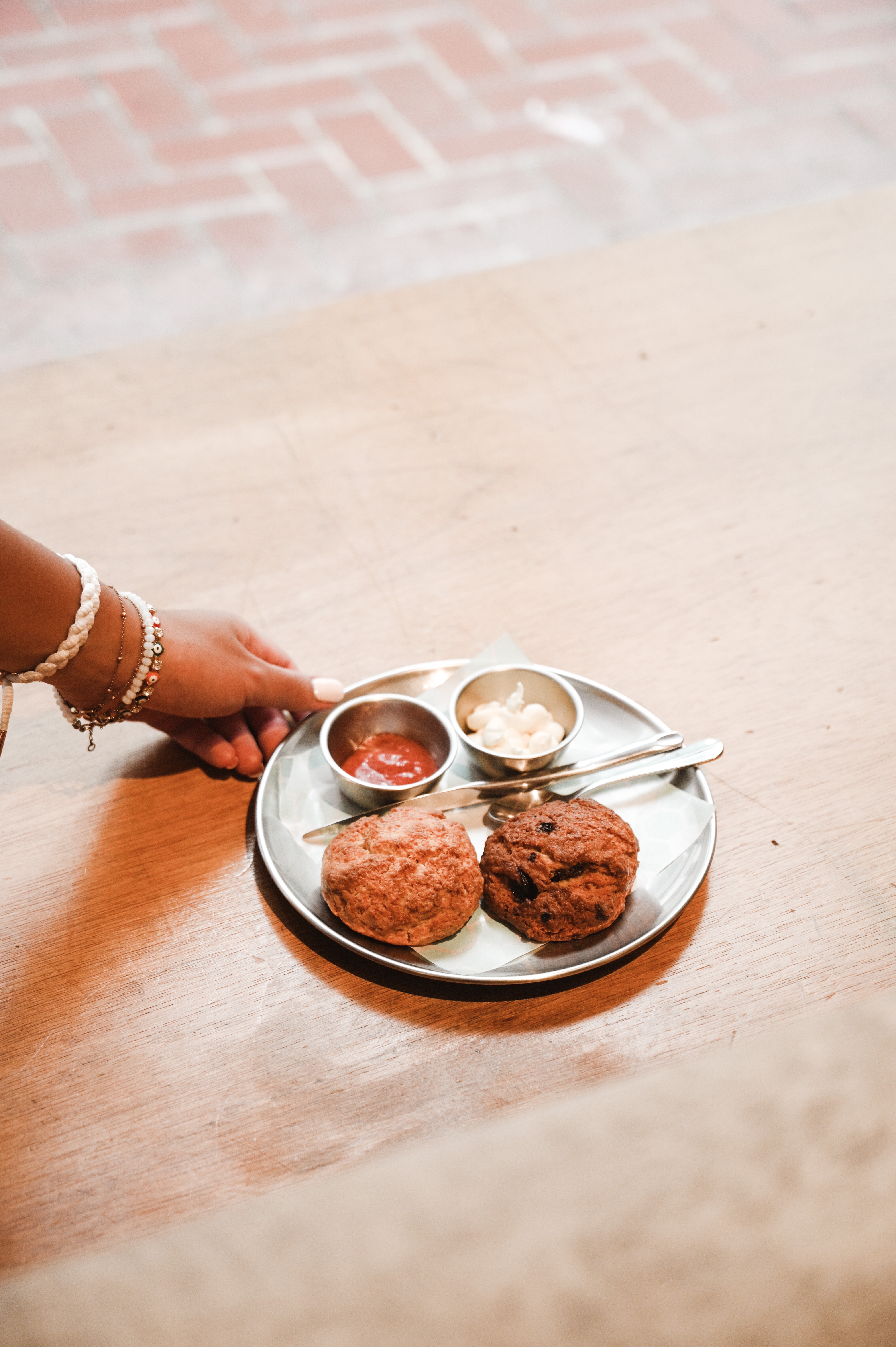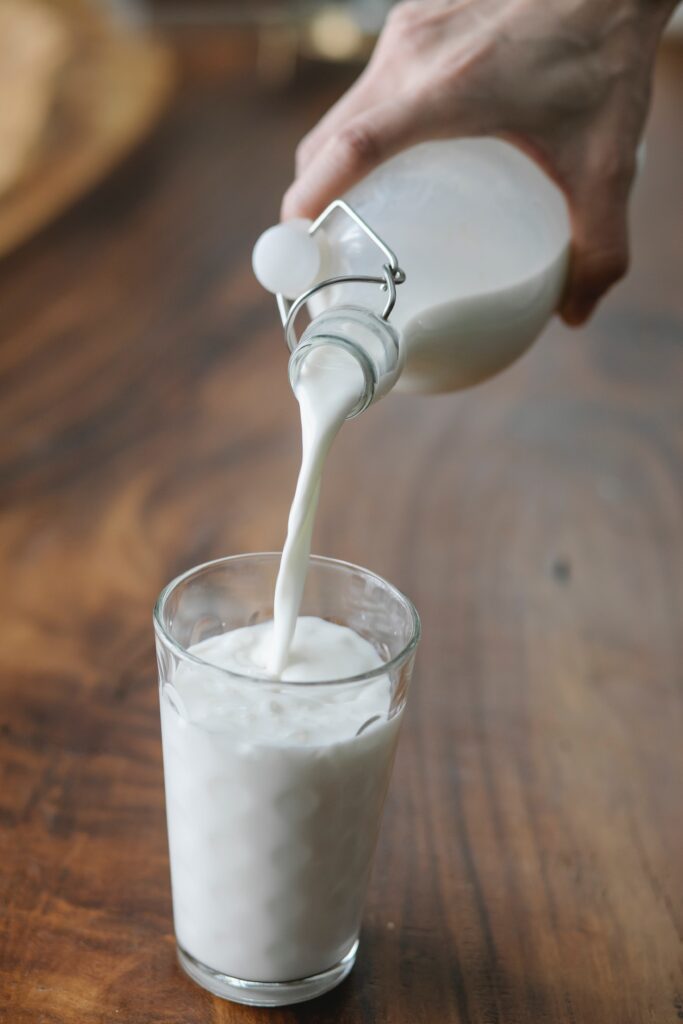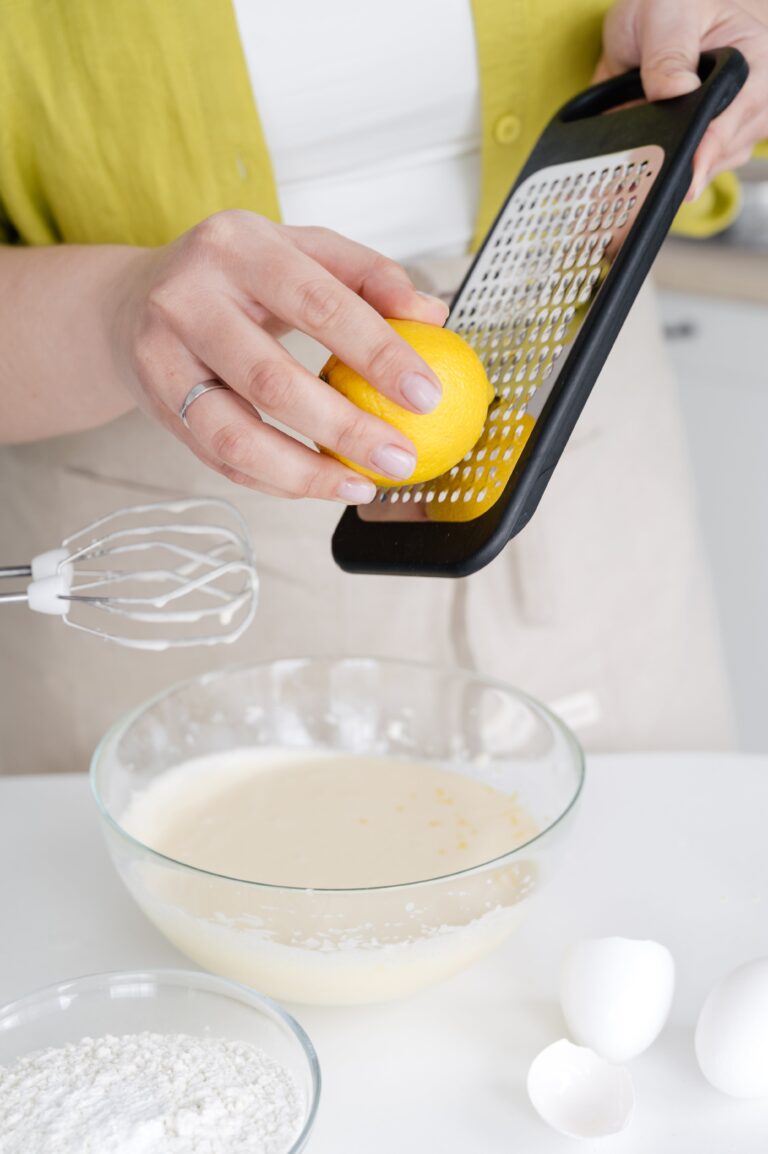
Clotted cream, a thick cream made popular in cream teas and desserts, is a beloved dairy product. But what happens when you have leftover clotted cream? Can you freeze it? Does clotted cream freeze well? How long will it last in the freezer? In this blog post, we’ll explore the ins and outs of freezing clotted cream and the best way to do so.
What is Clotted Cream
Clotted cream is a rich and luxurious dairy product with a thick, silky texture. It is traditionally made by heating unpasteurized cow’s milk and allowing it to slowly cool, causing the cream to rise and form a thick layer on the surface. The thick cream is then skimmed off and collected, resulting in a velvety, clotted consistency.
What Does Clotted Cream Taste Like?
Clotted cream has a distinct and indulgent flavor that sets it apart from other dairy products. Its taste is rich, creamy, and slightly sweet, with a subtle hint of buttery goodness. The high fat content in clotted cream contributes to its luxurious mouthfeel and adds a velvety smoothness to its flavor.
The slow heating and cooling process used to create clotted cream give it a unique caramelized and nutty undertone, adding depth to its taste profile. The natural sweetness of the cream comes through, but it is not overpowering. Instead, it provides a delicate balance to the richness, making each spoonful a delight to savor.
Where does Clotted Cream Originate From
Originating in southwestern England in the United Kingdom, clotted cream is a staple in British cuisine, particularly in the regions of Cornwall and Devon. It is commonly enjoyed as a topping for scones, along with jam, during afternoon tea or served as a decadent accompaniment to desserts and fruit.
How is Clotted Cream Made
Clotted cream is traditionally made from unpasteurized full-fat milk. Commercially produced versions are often made from pasteurized milk for safety reasons. However, the production method remains unchanged. The process of heating and cooling the milk is still employed to achieve the characteristic clotted consistency. It must be heated at a low temperature in order to achieve a thick and luxurious cream.
Clotted cream has a high-fat content, typically around 55-60%, which contributes to its creamy, smooth texture and indulgent flavor. Its unique texture sets it apart from other cream varieties, making it a sought-after treat for those who appreciate its lusciousness.

How long will clotted cream keep in the fridge?
Firstly, let’s talk about the shelf life of clotted cream. Unopened clotted cream can typically be stored in the fridge for up to a week, but once opened, it should be consumed within a few days time. However, freezing clotted cream can extend its shelf life.
How do I know if clotted cream has spoiled?
When it comes to clotted cream, it’s important to be aware of signs that indicate it may have spoiled. Here are some indicators that clotted cream may no longer be safe for consumption:
- Smell: Give the clotted cream a sniff. If you detect a sour or off odor, it could be a sign that the cream has gone bad. Fresh clotted cream should have a pleasant, creamy aroma.
- Mold or Unusual Growth: Check the surface of the clotted cream for any mold or unusual growth. If you notice any fuzzy patches, green spots, or discoloration, it is a clear indication that the cream has spoiled and should not be consumed.
- Texture: Clotted cream should have a smooth and thick consistency. If you notice any separation, curdling, or a slimy texture of the cream, it’s a sign that the cream has likely gone bad.
- Taste: If you’re uncertain about the quality of clotted cream, you can do a small taste test. Spoiled clotted cream may have a tangy or sour taste, indicating bacterial growth and spoilage.
It’s important to note that clotted cream has a shorter shelf life compared to other dairy products. Even when stored properly in the refrigerator, it should be consumed within a few days of opening. If you are unsure about the freshness or safety of clotted cream, it is best to err on the side of caution and discard it to avoid any potential foodborne illnesses.
Benefits of Freezing Clotted Cream
Freezing clotted cream offers several benefits. Firstly, it extends the shelf life of this rich dairy product, preventing wastage if you can’t consume it all at once. Secondly, it allows you to enjoy clotted cream at your convenience, even when it’s out of season or not readily available. Additionally, freezing clotted cream is a handy way to preserve leftovers from a special occasion or gathering. These are just a few main reasons why freezing clotted cream can help reduce waste.

How to Freeze Clotted Cream
Freezing clotted cream is a simple process that allows you to preserve this luxurious dairy product for future use. Here’s a step by step guide on how to do it:
- Choose Fresh Clotted Cream: Make sure you have fresh, high-quality clotted cream. Check the expiration date and ensure that it hasn’t been open for too long.
- Portion the Cream: Divide the clotted cream into portions that you’re likely to use in a single serving. You can use airtight containers or silicone ice cube trays for this purpose. It’s best to freeze clotted cream in small batches to avoid later defrosting more than you need.
- Pack in Airtight Containers: If using a freezer-safe container, spoon the clotted cream into them, leaving a small amount of space at the top to allow for expansion as the cream freezes. Seal the air-tight container tightly to prevent air from getting in, which can lead to freezer burn and the formation of ice crystals. You can also add the container into a freezer bag for extra protection.
- Label and Date: To keep track of freshness, it’s always a good idea to label each sealed container or tray with the date of freezing or storage date.
- Freeze: Place the sealed containers or trays in the freezer. Ensure they are stored on a flat surface to prevent spillage or mishaps.
Important Note
It’s worth mentioning that the freezing process of clotted cream may affect its taste slightly, so it’s recommended to use thawed clotted cream in recipes rather than frozen for spreading on warm scones with strawberry jam or enjoying with afternoon tea as a delicious treat!
How Long Can You Freeze Clotted Cream
Clotted cream can be safely frozen for up to 2 to 3 months when stored in air-tight containers or freezer bags at a constant freezing temperature of 0°F (-18°C) or lower. While it may remain safe to eat beyond this period, the texture and flavor can gradually deteriorate due to potential ice crystal formation. To maintain the best quality and avoid slight texture changes, it’s advisable to use frozen clotted cream within the recommended timeframe and label containers with the date of freezing for reference.
How To Defrost Clotted Cream
When it comes to defrosting clotted cream, it’s best to transfer it to the fridge and allow it to thaw slowly overnight. Avoid defrosting at room temperature or in the oven, as this can alter the texture.
Can You Refreeze Clotted Cream
Once clotted cream has been thawed, it should not be refrozen. If you need smaller portions, consider dividing the clotted cream before freezing.
What to Do with Clotted Cream
With its rich and creamy texture, can be used in various delicious ways. Here are some ideas on what to do with clotted cream:
- Classic Cream Tea: Enjoy clotted cream the traditional way by serving it with freshly baked scones and your favourite homemade jam, like raspberry jam or preserves. It actually pairs perfectly with this Strawberry Preserve. Spread a generous dollop of clotted cream on a warm homemade scones for a delectable treat.
- Dessert Toppings: I love to use clotted cream as a luscious topping for desserts like pies, tarts, crumbles, or fruit salads in place of ice cream or whippeing cream. Its creamy richness adds a luxurious touch to sweet treats. Try it on this Strawberry Crumble, or Mini Blueberry Tarts or even this Honey Lime Rainbow Fruit Salad.
- Decadent Pancakes or Waffles: Instead of the usual butter and maple syrup, top your pancakes or waffles with clotted cream for an indulgent breakfast or brunch experience. It’s thicker consistency would be perfect with these Waffle Sandwiches or these Fluffy Pancakes.
- Creamy Puddings: Incorporate clotted cream into homemade puddings or instant puddings, custards, or homamde rice puddings or tapioca puddings. It will add a velvety smoothness and richness to the dessert.
- Alternative to Icing: Use clotted cream to fill and frost cakes, cupcakes, or pastries for an extra creamy and flavorful twist. It pairs wonderfully with flavors like chocolate, berries, or citrus. I love adding it on top of these Raspberry Muffins and these Healthy Banana Muffins.
How to Make Homemade Clotted Cream
If you’re wanting to make your own clotted cream at home, follow this simple recipe by Curious Cuisiniere. It’s so simple to make and all you’ll need for her clotted cream recipe is 2 cups of heavy cream.
Can you freeze homemade clotted cream?
Yes, you absolutely can. Just follow the same steps as we discussed above for freezing grocery store bought clotted cream.
Final Thoughts
In conclusion, while clotted cream freezes well, it’s important to be aware of the potential changes in texture and taste. By following proper freezing and thawing methods and using an airtight container, you can still enjoy the convenience of frozen clotted cream in your favorite recipes.

Christopher is a food and lifestyle expert, recipe developer and the content creator behind May Eighty Five. With years of experience in the kitchen, he also shares tips, tricks and how to’s that he has learnt over the years. Every week, he shares quick, simple and mostly healthy recipes along with some home and entertaining tips. You will find flavorful cocktails, delicious appetizers, tasty mains and some indulgent desserts. As a home decor enthusiast, he also likes to share simple DIY projects and simple tips for a beautiful home.








One Comment